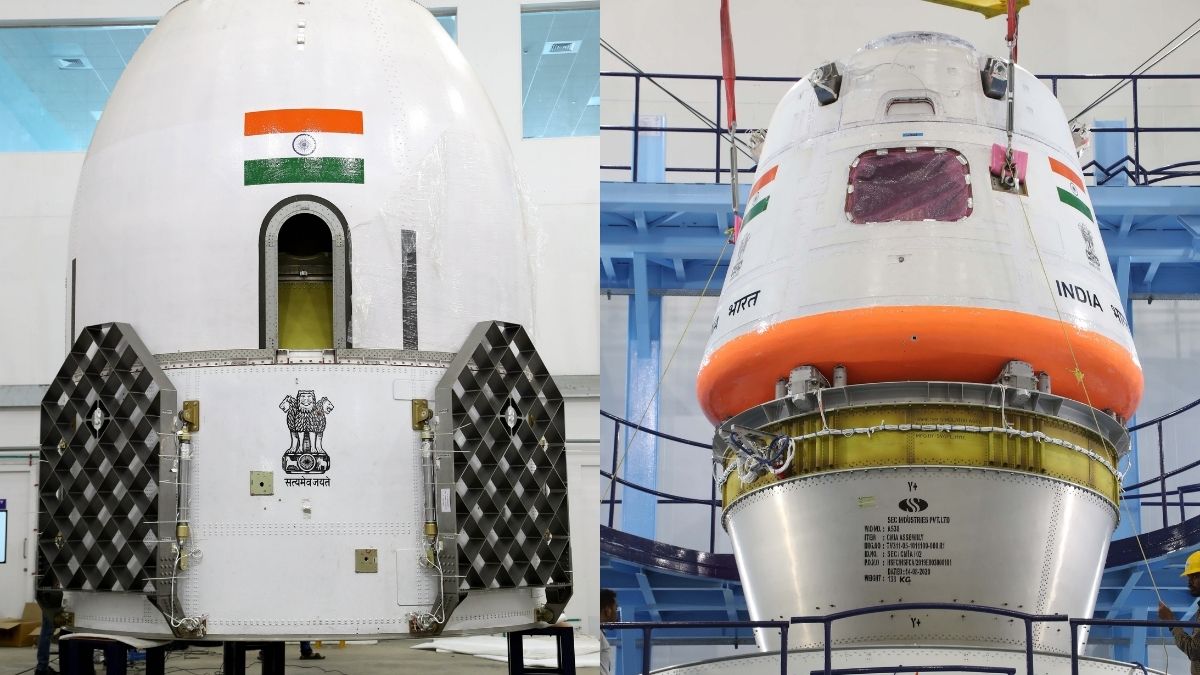"Dream, Dream, Dream! Conduct these dreams into thoughts, and then transform them into action."
- Dr. A. P. J. Abdul Kalam
"Dream, Dream, Dream! Conduct these dreams into thoughts, and then transform them into action."
- Dr. A. P. J. Abdul Kalam
23 Feb 2024
The Indian Space Research Organisation (ISRO) on Wednesday said that the performance of the key cryogenic engine to be used on board the LVM3 launch vehicles for India’s Gaganyaan missions has been qualified and is now certified for missions that will transport humans into space. In a big move towards the development of the Gaganyaan mission, the Indian Space Research Organisation (ISRO) successfully tested the cryogenic engine that will power Indian astronauts to space. Gaganyaan is India’s proposed first human flight mission that envisions sending a three-membered crew into an orbit of 400km for three days and bringing them back to Earth. The first unmanned Gaganyaan – 1 mission is scheduled sometime in mid-2024. ISRO’s heavy-lift launcher, the LVM has been identified as the launch vehicle to be used during the Gaganyaan missions. Comprising solid, liquid, and a cryogenic stage, these systems can be configured to ferry humans into space.

The seventh in the series of vacuum tests performed on the CE20 cryogenic engine (The CE-20 is a cryogenic rocket engine developed by the Liquid Propulsion Systems Centre, a subsidiary of the Indian Space Research Organisation), which powers the space vehicle during the cryogenic stage of its lift-off, was performed on February 14 at the space agency’s High Altitude Test Facility in Mahendragiri in Tamil Nadu. “ISRO has accomplished a major milestone in human-rating of CE20 of the LVM3 vehicle for Gaganyaan missions,” the ISRO shared on its ‘X’ handle on Wednesday.
Previously, the CE20 was subjected to 39 hot firing tests under varying operating conditions that lasted for 8,810 seconds (2 hours 26 minutes), whereas the minimum standard time for human rating is 6,350 seconds (1hr 45 minutes). ISRO further said that even the flight engine, identified for the first Gaganyaan mission, has completed the acceptance tests. Powering the upper stages of the LVM3, the flight engine boasts of a thrust capacity of 19-22 tonnes with an impulse of 442.5 seconds.
The TV-D1 test flight was a crucial part of the Gaganyaan mission ~

It aimed to demonstrate India's capability for human spaceflight by sending a crew of three individuals into a 400-kilometer orbit for a three-day mission and ensuring their safe return by landing in the waters of the Indian Ocean. The test flight was to assess the mid-flight crew escape system of an early version of the Gaganyaan crew module. The TV-D1 vehicle used a modified VIKAS engine with a Crew Module and Crew Escape System mounted at its front. It stood at 34.9 meters tall and had a lift-off weight of 44 tonnes. Its structure was a single-walled unpressurized aluminum structure with a simulated thermal protection system.
The development of a human-rate launch vehicle is part of the several tests and technology development efforts required for the proposed human-space flight mission. Other technological developments such as the development of life support systems to provide an earth-like environment to the crew in space, crew emergency escape provision, and evolving crew management aspects for training, recovery, and rehabilitation of crew are planned. Besides, precursor missions are being planned which will demonstrate the technology preparedness levels before the actual manned Gaganyaan mission.